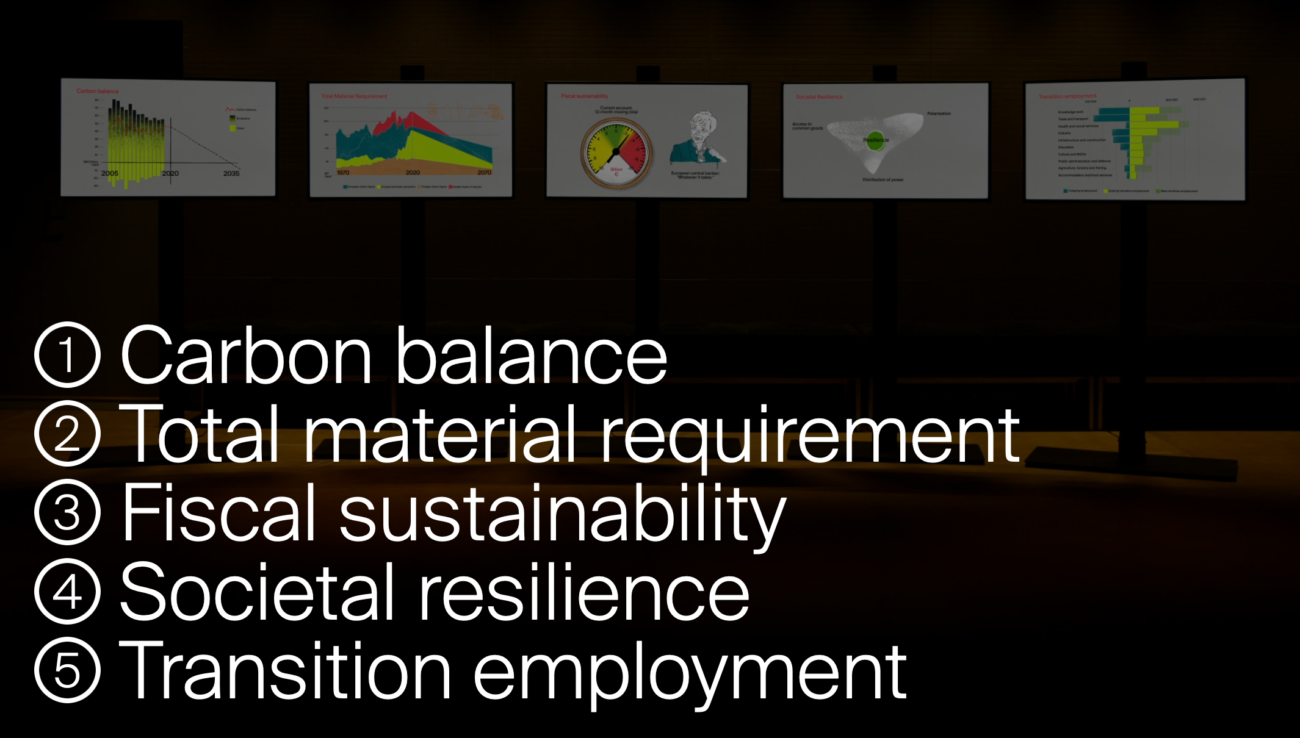Finland is committed to radically lowering its climate emissions and to stop biodiversity loss during the following years. Success requires abandoning the use of fossil fuels and the overconsumption of other natural resources. To be able to simultaneously secure the conditions for good human life, the key systems related to energy, transport, housing and food need to be thoroughly reconstructed. This massive task requires planning and systematic execution. It also determines the future of employment and industrial development.
The growth of gross domestic product, the level of public debt or the general rate of employment have very little to say about progress in the task. Nevertheless, they are the indicators that direct the government’s work and set the agenda for a major part of the public debate. At the same time, Finland risks missing the opportunity to make good use of the shock caused by the corona pandemic: instead of redirecting the economy toward a sustainable path, the aim seems to be to revive the economy back to its pre-corona state. The government does not have functioning indicators for a qualitative change of the economy.
To fill this gap, BIOS Research Unit has built a dashboard for transition politics. The dashboard consists of five indicators through which the government, journalists and citizens can follow the progress of ecological reconstruction in Finland. The indicators are carbon balance, total material requirement, fiscal sustainability, societal resilience and transition employment.
Carbon balance and total material requirement offer goals on the national level for emissions and natural resource use within a specific timeframe. Fiscal sustainability indicates the fiscal capacity of the state to finance public spending and investment during the reconstruction and afterwards – and does so without tying fiscal sustainability to economic growth. Societal resilience uses the traffic light metaphor to indicate if citizens feel that they are in the same boat during reconstruction; when green, participation is good, when yellow, there is reason to worry, and a red light means that societal resilience is breaking. Transition employment gathers information on how well employment in different sectors corresponds to the work that is needed for ecological reconstruction.
To check out the dashboard, please visit https://dashboard.bios.fi
Helsinki Art Museum HAM invited BIOS to be a part of the Helsinki Biennial, on Vallisaari island outside Helsinki, planned for summer 2020. Due to the global pandemic, the biennial was postponed, and the dashboard, initially intended as a part of BIOS’s participation in it, was presented in HAM during 15.–27.9.2020.


